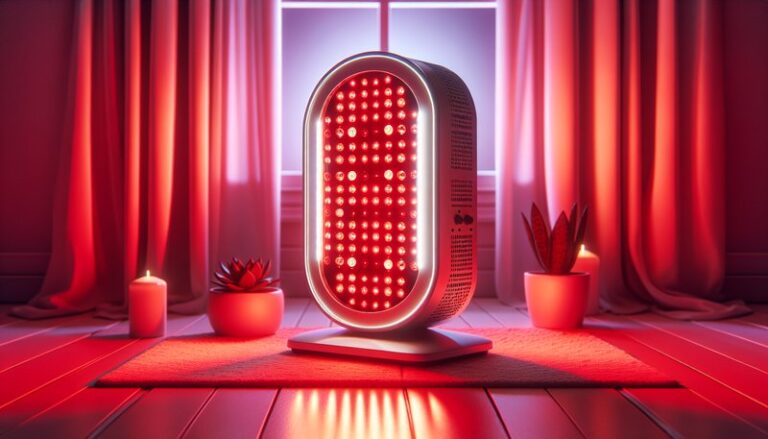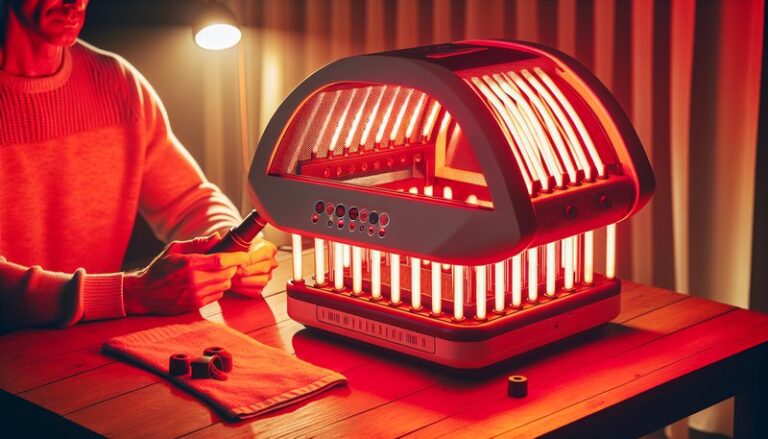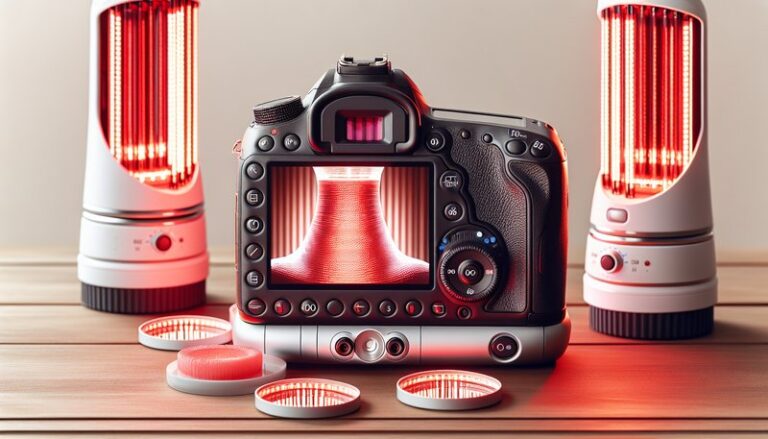What Red Light Therapy Does?
Have you ever wondered how certain therapies harness the power of light to enhance healing and rejuvenation?
In recent years, red light therapy (RLT) has emerged as a popular treatment for various health issues, ranging from skin conditions to muscle recovery. This article will explore the science behind red light therapy, its benefits, and considerations to keep in mind if you are considering this innovative treatment.
Key Takeaways
- Red light therapy utilizes specific wavelengths of light to stimulate cellular processes, promoting healing and reducing inflammation.
- It offers a range of benefits, including improved skin health, pain relief, and enhanced athletic performance.
- While generally safe, it is essential to consider individual needs and consult with a healthcare professional before starting treatment.
What is Red Light Therapy?
Red light therapy refers to the use of low-level wavelengths of red light, typically between 600 and 650 nanometers, to promote healing and tissue regeneration. This non-invasive treatment is believed to enhance mitochondrial performance, leading to increased energy production within cells.
The therapy works by penetrating the skin to stimulate various biochemical processes. As a result, RLT has gained traction in aesthetic medicine, sports recovery, and pain management.
The origins of red light therapy date back to the 1960s when researchers discovered the benefits of laser light in wound healing. Over the decades, the technology advanced, leading to the development of devices designed for home use and clinical applications.
What are the Benefits of Red Light Therapy?
The following section delves into the numerous advantages of red light therapy, highlighting its potential impact on physical health and well-being.
Skin Health Improvement
Red light therapy is often touted for its ability to improve skin texture, reduce wrinkles, and diminish scars. Studies have shown that it promotes collagen production, resulting in a firmer and more youthful appearance. Regular use may help manage conditions such as acne and psoriasis, offering a natural alternative to topical treatments.
Pain Relief and Muscle Recovery
Athletes and fitness enthusiasts frequently turn to red light therapy for its pain-relieving properties. RLT can help reduce muscle soreness and inflammation, promoting quicker recovery after intense workouts. This advantage is particularly beneficial for those engaged in high-impact sports or rehabilitation programs.
Enhanced Mood and Sleep Quality
Emerging research suggests that red light therapy may positively influence mood and sleep patterns. The soothing effect of red light can help regulate circadian rhythms and may be beneficial for individuals suffering from seasonal affective disorder (SAD). A routine involving red light exposure in the evening may promote relaxation and improve sleep quality.
Wound Healing and Tissue Repair
RLT enhances the body’s natural healing processes, making it effective for treating wounds and injuries. Studies indicate that red light therapy can accelerate healing time for cuts and burns, promoting tissue regeneration and reducing scarring.
Is it Possible to Use Red Light Therapy at Home?
Many people wonder about the feasibility of using red light therapy devices at home. With the advancement of technology, personal use of these devices has become more accessible. However, understanding how to effectively and safely use them is essential.
What are the Advantages of Home Use?
The convenience of using red light therapy at home allows individuals to incorporate treatment into their daily routines.
- Cost-Effective: While professional sessions can be expensive, investing in a home device can save money in the long run.
- Flexible Treatment Schedule: You can use the device at your convenience, ensuring consistent therapy sessions.
- Privacy and Comfort: Home treatment offers a comfortable environment for individuals who may feel self-conscious in clinical settings.
What are the Disadvantages of Home Use?
Despite the benefits, there are some challenges associated with using red light therapy devices at home.
- Device Quality: Not all home devices are created equal. Lower-quality devices may not provide effective wavelengths or intensity.
- User Knowledge: Without proper guidance, users may not apply the therapy correctly, leading to suboptimal results.
- Limited Professional Guidance: Home users miss out on personalized treatment plans that healthcare professionals offer.
What are the Things to Consider Before Using Red Light Therapy?
If you’re contemplating red light therapy, there are crucial factors to evaluate before starting treatment.
Consult with a Healthcare Professional
Before beginning any new therapy, consulting a healthcare provider is essential. They can help determine if RLT is suitable for your specific health needs or conditions.
Device Selection
Choosing the right device is critical for effective treatment. Research reputable brands, user reviews, and product specifications to ensure quality and efficacy.
Individual Skin Sensitivity
Everyone’s skin is unique, and sensitivity to light can vary greatly. Conduct a patch test or consult with a dermatologist before extensive use.
What are the Alternatives to Red Light Therapy?
If red light therapy isn’t suitable for you, there are various alternative treatments that may provide similar benefits.
Cold Laser Therapy
Cold laser therapy uses specific wavelengths of light to promote healing without generating heat. It is often used for pain management and rehabilitation.
Photobiomodulation Therapy
Photobiomodulation is a broader term that encompasses light therapy, including red light therapy. It can utilize different wavelengths and may offer diverse therapeutic effects.
Ultrasound Therapy
Ultrasound therapy uses sound waves to enhance tissue healing and reduce inflammation. It is commonly used in physical therapy settings for injury recovery.
Conclusion: Is it Recommended to Use Red Light Therapy?
Red light therapy presents a promising option for individuals seeking non-invasive solutions for various health concerns, including skin issues and pain relief. However, it is critical to approach this therapy with informed consideration, consulting healthcare providers and evaluating personal needs.
Frequently Asked Questions
What conditions can red light therapy help with?
Red light therapy has shown potential in helping with skin conditions, pain management, wound healing, and improving mood and sleep quality.
How often should I use red light therapy?
The frequency of use can vary depending on the specific device and condition being treated. Typically, sessions may range from two to five times per week, depending on individual needs and device specifications.
Discover Does it work?
Is red light therapy safe for everyone?
Generally, red light therapy is considered safe for most people. However, individuals with certain medical conditions or those who are pregnant should consult a healthcare professional before using it.
Can red light therapy replace traditional treatments?
While red light therapy can complement traditional treatments, it should not be viewed as a replacement. Always consult with a healthcare provider to determine the best treatment approach for your needs.
Find our take on Does Red Light Therapy Boost Testosterone?
Are there any side effects of red light therapy?
Side effects are rare, but some individuals may experience temporary redness or discomfort at the site of treatment. Always follow device guidelines and consult a professional if you have concerns.





